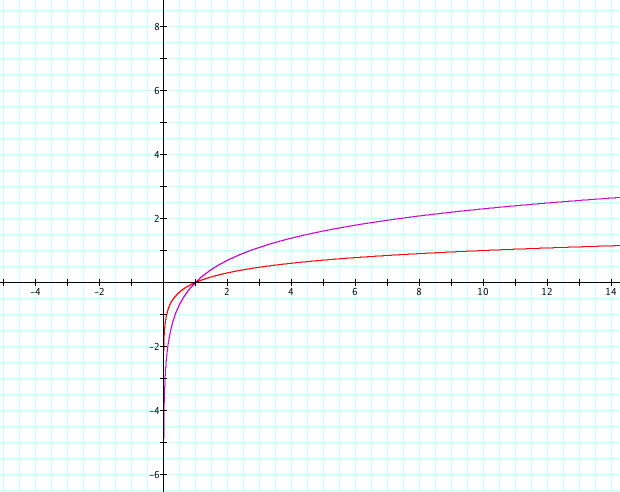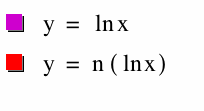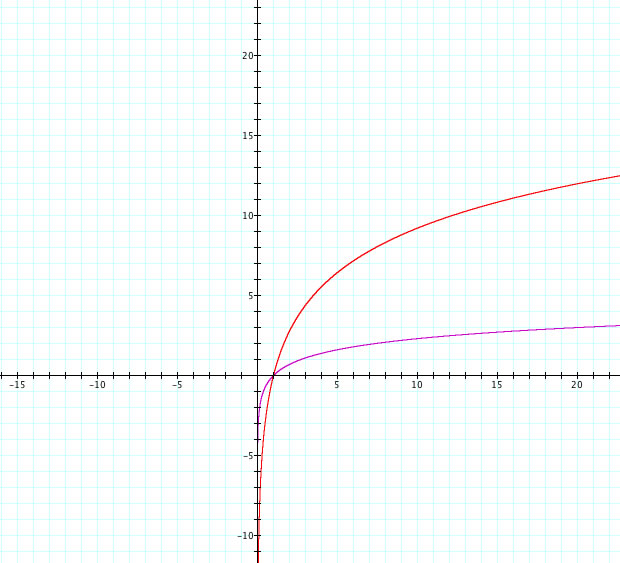

First let us begin with the parent functions of natural log and log of x.


Notice that both graphs intersect at (1,0).
Now lets looks how the graph of ln x is transformed when it is multiplied by a constant. The graph below shows when the equation is
y = 4 (ln x). Notice that the values of ln x now has a stretch factor of 4.


CLICK HERE FOR ANIMATION to investigate the values
What happens when x is multiplied by a constant.....
.gif)
.jpg)
CLICK HERE FOR ANIMATION to investigate the values
Notice now that the values of ln x has shifted up by ln n. For example, ln 2 = .69 and ln (4*2) = 2.08....Well ln 4 = 1.39, so at x =2 the graph shifted up by 1.39. Therefore we can say that ln (nx) = ln n + ln x
Now let's observe what happens with a logarithmic function when it is multiplied by a constant. The graph you see below is
y = 4 (log x)

.jpg)
CLICK HERE FOR ANIMATION to investigate the values
Just like the natural log graphs...multiplying by n gives a stretch factor of n. Comparing the graphs log x with 4 (log x), you can see that the values of 4 (log x) are four times the values of log x!!!
Since the logarithmic function above had similar results to the natural log function, I will hypothesis that when I multiply x by a constant I will get log (nx) = log n + log x.....
.gif)
.jpg)
CLICK HERE FOR ANIMATION to investigate the values
Analyzing the values between both graphs.... is my hypothesis correct??? Yes.. at x =2...log 2 = .301 and log (4*2) = .903 which is the same as log 4 + log 2 since log 4 = .602...